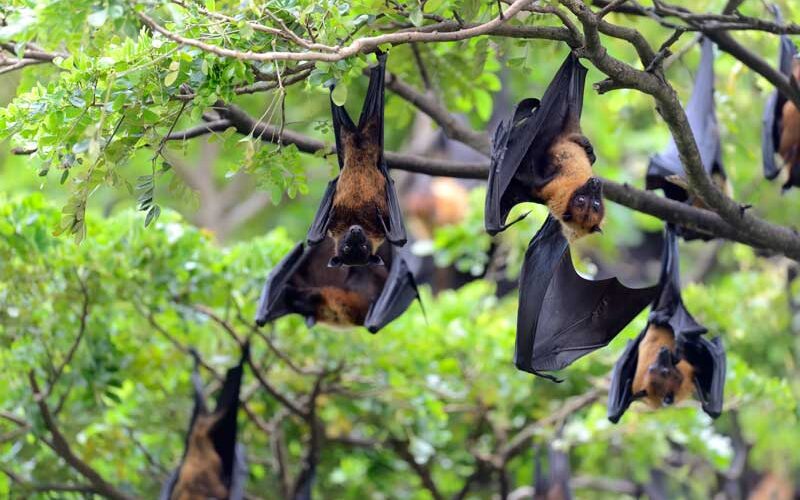What is echolocation?
Echolocation is a method used by some animals, including dolphins, bats, and some species of birds, to locate objects by reflecting sound waves off of them. It is also known as biological sonar. Animals utilize echolocation to hunt for food, communicate with other members of their species, and investigate their surroundings, which is a reality. The strength and frequency of the reflected sound can be used to determine the object’s distance, speed, direction, and size (Enrera, 2022).
Why did echolocation evolve in animals?
This ability to see in murky water or in the deep ocean may have evolved to allow tooth whales and dolphins to chase away squid and other deep-diving creatures. It aids in nighttime flight and cave exploration. It’s likely that bats invented this technology so they could find insects flying at night that birds couldn’t see (Price, 2021).
What animals use echolocation?
Bats
Bats have been using sound to guide them for around 52 million years, which is much longer than the existence of humans. Today, thousands of different species of bats possess the echolocation ability, which they use to scare off insects like moths and mosquitoes as well as other food. Some very experienced insectivorous bats can conceal on leaves at night and hunt for stationary insects. Many insects have developed protections against bat sonar in response. While other moths use their ultrasonic signals to obstruct enemy sonar, the loony moth’s long tail may serve as a reaction bait, sprouting up and misleading the bats.
Bats produce ultrasonic sound by vibrating a unique organ in their necks called the larynx. When people speak, it functions similarly, but bats produce considerably higher-frequency noises. Then, whereas some bat species produce sounds through their mouths, others use the anatomy of their noses to produce noises through their snouts.
Whales
Killer whales, dolphins, and other toothed whales resonate in the same way as bats do. To find delicious food and wander around in the dark. But mammals that live in this water emit ultrasound in a different way than bats do. Often, there is a lip-shaped cover inside the whale’s head near its fountain hole. As whales push air over their wings, they click, and the appendages vibrate.
The dolphin’s melons, an oily structure in front of its head, are where the noise is directed by the curve of the dolphin’s skull. The vibrations are then effectively transmitted into the ocean water. The whales rely on their external ears to hear no echoes despite the waves’ reflections off of other objects or prey. In contrast, the whale’s jawbone transmits the vibration so that light can travel through the chambers where the sound is made of fat. The whale’s inner ear has cavities nearby, and echoes can pick up clicking noises. You can learn a lot of information through this method, including the location of the fish, its current location, and its rate of movement.
Soft-haired tree mice
A 2021 study that was published in the journal Science discovered that four different species of soft-haired tree rats resonate through squeaking. This rodent, which belongs to the genus Tiflomis, which means “blind mouse,” lives in the deep bamboo forests of China and Vietnam. After analyzing the morphology, genetics, and behavior of the critters, the researchers claimed there was proof that the tree mouse was a recently discovered “reactive lineage in mammals.”
Are there any undiscovered animals that have the ability to use echolocation? Kloper was asked about it, and he said that it might be. She claimed that, given “how little people know about the vocalization of many mysterious species,” it is difficult to determine which creatures, outside birds and mammals, exhibit echolocation.
Human
People, unlike bats, do not inherently have the capability of echolocation, but we can take advantage of it. In Griffin’s 1994 paper, he discussed the blind following the taping of a cane or the captains who hear the ship honking against the cliff face (Guarino, 2023).
Conclusion
Animals create their own ultrasound waves and emit them into the environment to perform echolocation. In the dark or while submerged in water, it is used to communicate or locate food. Although there are only a limited number of animal species that have been identified as employing echolocation, it is believed that many more do.
References
Enrera, R. (2022). What is Echolocation? [online] Study.com. Available at: https://study.com/learn/lesson/echolocation-uses-importance-examples-what-is-echolocation.html [Accessed 8 August 2023].
Guarino, B. (2023). How echolocation lets bats, dolphins, and even people navigate by sound. [online] Popular Science. Available at: https://www.popsci.com/science/what-is-echolocation/ [Accessed 8 August 2023].
Price, J. (2021). What is echolocation and which animals use it? [online] Discover Wildlife. Available at: https://www.discoverwildlife.com/animal-facts/what-is-echolocation/ [Accessed 8 August 2023].
